Tamiya 1/48th N. American F-51D Mustang Korean War 1950
It's mid July 1950, it has been about a month since the war started when the N. Koreans crossed the 38th parallel invading S. Korea. Cpt James Kerley stands next to his F-51 ready to fly his first mission. One of 145 Mustangs rushed to the theatre from the states. On the USS Boxer (CV-21) arriving from NAS Alameda, California, making the trip to Japan in just 8 days. (Imagine today's carriers how fast they can arrive on station). The US was caught totally off guard with the invasion. The USAF was in the middle of transitioning to an all jet fighter force. Most of the F-51's were with Air National Guard units or in mothballs or sold off to smaller air forces. 30 which were with the ROKAF for training personnel which eventual use in front line service. Of these at the time when war broke out, only 10 were serviceable for combat use. These 10 were returned to the USAF and immediately put into use 5 days into the war. 9 pilots were brought in from the Phillipines to fly them and were dubbed the "Dallas Squadron". These pilots were from the 18th Fighter Bomber Group out of Clark flying F-80's. Flying out of Taegu AB (K-2). The Squadron was re-designated 51st Fighter Squadron. The original 10 which have been flying combat missions along with B-26B Invaders, F-82G Twin Mustangs, flying in country. F-80C Shooting Stars were flying in from Japan as the runways in Korea were not able to handle the jets. So time on target for the F-80's were short.
So now today here we are and already plenty of targets. Loaded with 500Lb bombs and 6 6.5 rockets. It has been awhile flying the Mustang, just fresh from flying the new F-80C but experienced Mustang drivers were needed now so back in the saddle again. But now flying close air support (CAS) was different, tactics not the normal regimen used in WWII. The 51st were the first unit to use the new 6.5 rockets and were quite effective against the Soviet built T-34's. The distinctive markings have not appeared yet at this point of the war. A rather fresh mount. Flight time to target was only about 15 minutes, so no need for drop tanks, the hard points were all ordnance. Today's mission was just targets of opportunity. Tanks, convoys, anything that was moving was a target. At this stage of the war it was target rich environment. Capt Kerley now warmed and ready to head out. On to the PSP runway, in a 2 ship formation and the fight was up in the air and flying low at 1500 ft, it was a cloudy day, low ceiling. Flying CAS was still new, it was all on the job training for everyone. Soon spotting a convoy, the Mustangs in trail hit the first truck in line the second Mustang hits the last truck, coming back around with the .50's light up the rest of the convoy as secondary explosions suggest ammunition cooking off. The next 2 ship formation go in carrying naphalm, drops the cannisters which lights up the whole area. The KPA (Korean Peoples Army) soon learned to hide during the day and move at night. So it was customary to shoot at haystacks that may be hiding a tank or truck. Most of the time that was the case. Seeing sparks from the ricocheting bullets would signify something hiding under them. There was so many targets to hit that soon he was out of ammo and had to return to base to re-arm. There was so much ordnance expended at the early part of the war, so many targets not enough aircraft of any type to keep up. Returning back to Taegu, on to the rearming rack, as rockets and this time naphalm were loaded up on the pylons. A swig of water and it was time to attack again. It was around the clock intense operation. Such was the life of the Mustang and it's pilots at the start of the Korean War.
Pretty much everyone knows how well Tamiya's Mustang builds. Simple and straight forward. It goes together so well that it is one that makes it much easier to do a difficult NMF scheme. For me I dread doing a natural metal finish, perfect seams, no sanding scratch marks, smooth finish. All it takes is one flaw and it is quite obvious even with todays finishes , the final clean up has to be perfect. It was that way with rub n buff, Model Master, Alclad and the new Vallejo metal finishes. A natural metal finish really stands out though. One thing though it is also easy to over weather. So since I am not quite good at weathering an NMF scheme quite yet, I wanted to build a Mustang that just arrived in theatre, still fresh, (though these were not new, they were still pretty clean.) A line bird with no distinctive markings. Using Aeromaster 48-099 Mustangs over Korea sheet and part of the kit decals to show a Mustang just one month into the war. Clean ready for it's first mission. I have always used MM metal finishes or Alclad for the metal portions on camo schemes. But I decided to try the Vallejo Acrylic metal finish for the first time. And i love how it worked out. I was still able to mask it over without peeling as I though it would. Have had trouble with MM but I have never run into that issue with Alclad. The only thing I didn't care for too much is the separate clear canopy to frame approach. I goofed with the cement when it was time to attach it to the framing. I would've much rather if it was all clear and masked it off for painting. Other than that it was a joy to build. Started the project in September I did finish it November. Thanks for viewing.
Chuck
Fly Navy
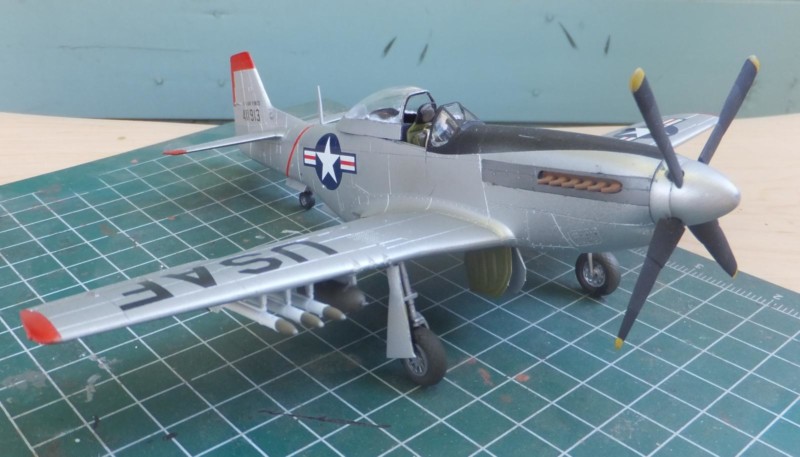
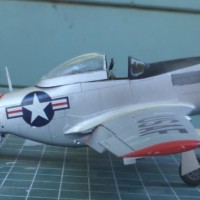
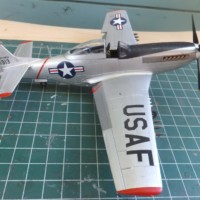
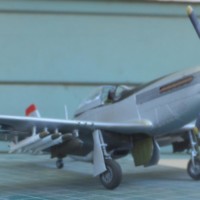
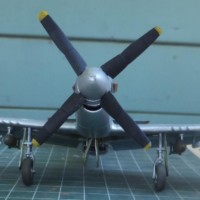
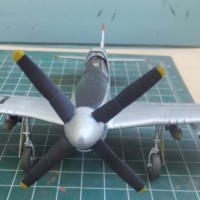
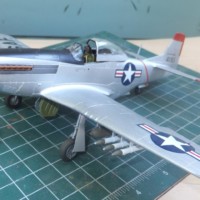
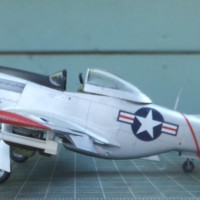
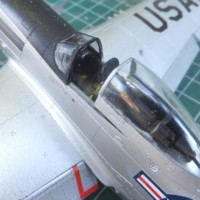
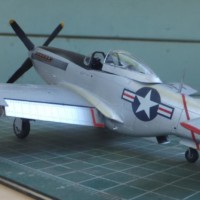
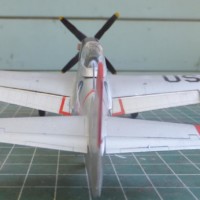
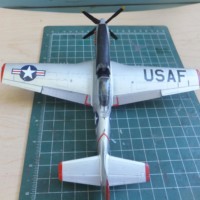
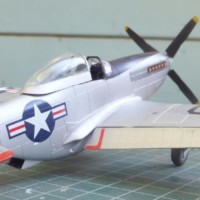

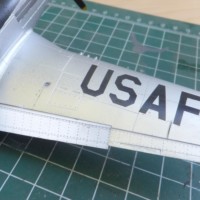

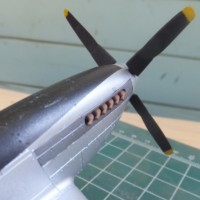
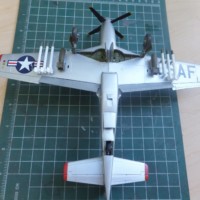
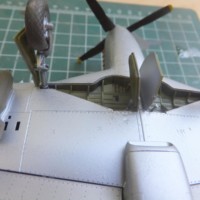
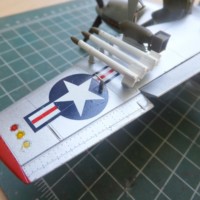



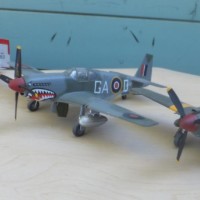

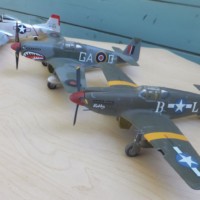

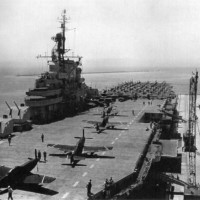
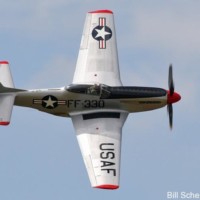
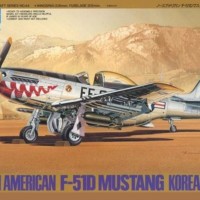
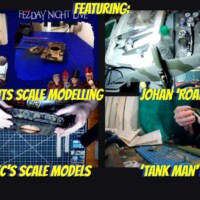

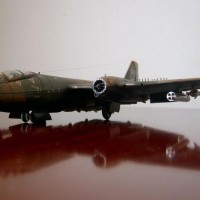
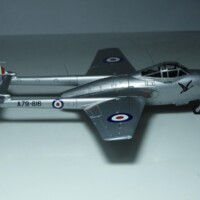
Great Job on that Mustang Chuck, also your topic is well researched, I like it a lot! Congrats!
Thank you Michel, as was your Opel Blitz, well done,
Nothing is better than a high quality build that goes hand in hand with a great story, Chuck! Another cracker - thank you!
Thanks Paul
For someone who doesn't like to do NMF finish I think you have mastered the task quite well. Good looking Mustang Chuck.
Actually I don't like the process in achieving a good NMF finish. So I try avoid them. But if I want to build F-86's, F-100's or any of the 50 jets. Have to, have faith in my abilities and build one every so often.
Nice clean build, Chuck...good job.
Thanks Craig.
Great looking aircraft and love the info
Thanks George
Nice work Chuck, and I share your pain about NMF finishes!
Thanks Robert, yes and yet we can overcome it.
Nice Chuck! I have been wondering about that Vallejo paint, looks like it worked great!
Rob
Thanks Rob, it worked really well coming out of the airbrush. So the next time an NMF scheme comes up I will use it again. Not that I will totally rule out Model Master or Alclad.
Great Musbang, Chuckles ! The background with history makes a great build even better.
Thanks Jeff
Nice! great story and photos.
Thanks Robert
This has a great story line behind the actual planes Chuck. Dad landed at Inchon just south of the Marines with the US Army's 7th Infantry during the Korean War. He told me some stories about Kimpo airfield near the end of his life. He told me that many Mustangs were lost due to ground fire. The way he put it was "they could knock out a P-51 with a well thrown rock ! The Corsairs and Skyraider planes were much better suited to ground support. " For me, I have often wondered why they didn't use the P-47 for these types of missions ? There were still plenty of them around and pilots who knew how to fly them too.
Anyhow, your Mustang looks really god my friend ! I especially like the pictures of your growing P-51 collection.
Well done Sir !
I try to put a human factor in each build. Something that brings the model to life. Though the pilot may be fictional, the events as described were true. I appreciate your comments, Thanks Louis
I've been looking forward to seeing this one posted, Chuck, as the others have already said, a nice clean build with a convincing NMF. I enjoyed reading the story behind it as well.
Thanks George, it took me a little longer to bring the Mustang out and reveal it's completion. Now that the holidays are over I can get back to presenting a couple of more recent builds.
Chuck, glad to see an F-51 getting some well deserved recognition, and doing a nice build with it makes it even better. To add a little to Louis's comment above, I have book with a quote from an F-51 pilot in Korea stating he'd "give up a months pay to have his P-47 back" ! Nice modeling here !
Thanks Terry, and very true about the F-51 and how difficult it was to find anything in regard in markings other than the shark mouth schemes. Just wanted to something more of an everyday line bird. I did read several comments wondering why the P-47 was not used. Already a proven CAS capable platform. Like today's A-10 in which ironically is called the Thunderbolt II.
I suspect that the P-51s were more available, so they (once again) fought with what they had. Jets were the thing, so lets send these old prop airplanes to the Guard. I remember hearing there were some P-51s in Japan that were scheduled to be scrapped. The officer in charge just had this feeling that wasn't a good idea. Good thing he didn't.
Very nice Chuck!
Thanks Greg